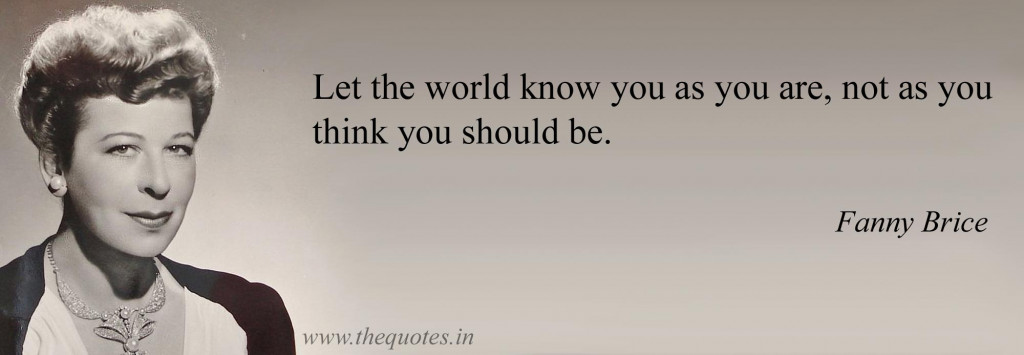
About five years back, one of my favorite authors, Steven Pressfield, wrote an amazing blog post on how to use your real life experiences in fiction.
In the post, Steve gives Seven Rules that I think apply amazingly well to crafting a branding campaign based on the real life values and experiences of the business owner.
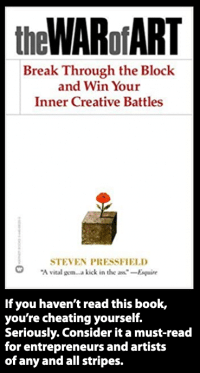 In other words, if you want to skip the inane, pantomime, bullshit advertising “schtick” that other agencies will try to sell you on…
In other words, if you want to skip the inane, pantomime, bullshit advertising “schtick” that other agencies will try to sell you on…
Then these rules will help you create a custom-fit, true-to-life ad campaign to attract customers who naturally gravitate to your values and way of doing business.
Here are Steve’s rules:
- Make the internal external
- Pick a genre and run with it
- Raise the stakes to life and death
- Fictionalize on-theme only
- Make it universal
- Make it beautiful
- Detach yourself from the character that is “you”
Let’s run through them one at a time.
Make The Internal External
Think of it this way: most small business owners who run above average businesses do so because they care.
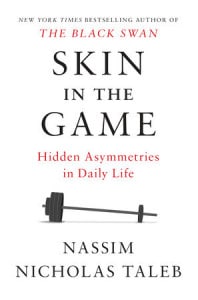 They’ve “got soul in the game,” as Taleb would say.
They’ve “got soul in the game,” as Taleb would say.
So for the owner, that’s what differentiates them from the competition.
That’s why the customer should choose them.
That’s what they’re hoping their advertising creatives can communicate.
The idea that they’ve got soul in the game.
Or as they’re more likely to express it: that they “care.”
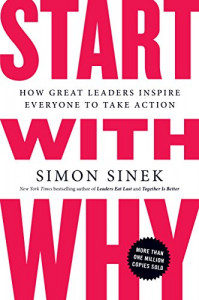
But without making the internal external, this strategy is doomed to fail.
You have to show how “caring” manifests itself in concrete actions that directly benefit the customer.
It’s exactly the same with Simon Sinek’s advice to “Start With Why.”
By all means communicate what you believe in and stand for.
But if you can’t externalize those beliefs into concrete benefits for the customer, your advertising will fall flat.
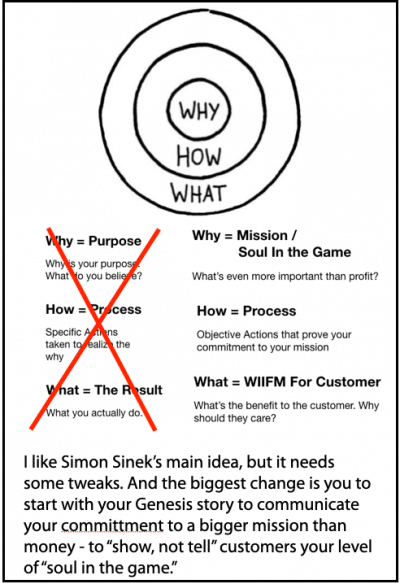 How can you externalize your “why” and your “caring”?
How can you externalize your “why” and your “caring”?
- Show the emotional motivation behind your mission, i.e., tell your genesis story
- Specific, customer-centric policies and procedures
- Audacious, No-loophole Guarantees and Warranties
- Investments in specialized pieces of equipment
- Unusual and Extra pains or expenses willingly undertaken
- Generosity
- Symbolic items, acts, or rituals
For example, a wood-fired pizza place can demonstrate how much they care about quality by the fact that they imported their wood-fired oven from Sicily.
Or they can demonstrate how much they value hospitality by making table wine free with any dine-in order.
Or symbolically show-off their hand-rolled and hand-tossed crusts by flipping them in the air, right out where customers can see.
In general, take the kind of things you’d be tempted to just say as a cliché, and figure out a way to tell that truth “slant.”
Pick a Genre and Run With It
This rule is akin to having a Character Diamond and a Style Guide.
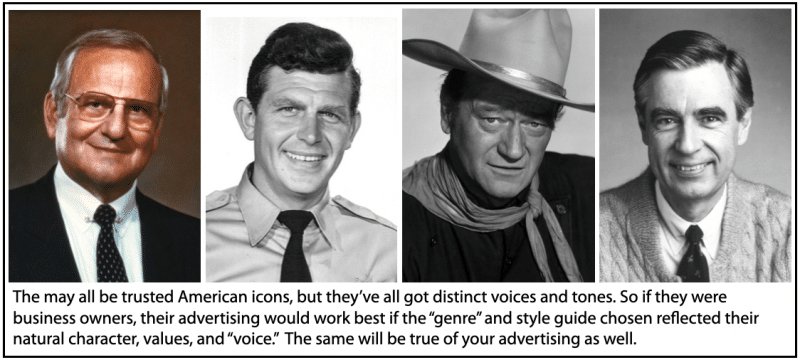
All branding campaigns should have a specific voice, atmosphere, and feel to it. A genre, if you will.
But that goes double for a character-driven, true-to-life campaign.
John Wayne is not Lee Iacocca is not Andy Griffith is not Mr. Rogers.
All of them might be iconic, trusted, straight-shooting truth tellers, but they all have distinctly different styles that manifested in distinctly different genres.
As an advertiser, you have to consciously pick your style.
You have to recognize the archetype your persona will embody and inhabit.
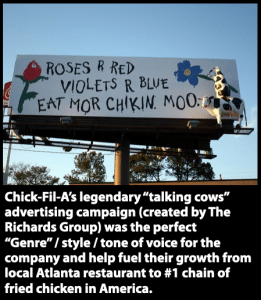
This is one reason you’ll want to work with an outside consultant: it is incredibly difficult to see these things from the inside.
It takes an outsider (and no small amount of artistic sensitivity) to correctly assess your character diamond and the best natural voice and genre that’ll suit you.
The last thing you want is to radiate an off-putting insincerity in your ads because you ended up with an inauthentic voice, style or genre.
Compare Chick-Fil-A’s legendary cow campaign to Burger King’s risibly bad “King” campaign.
Chick-Fil-A got it right and grew the company faster than most would imagine possible.
Burger King got it disastrously wrong and led to a sales decline, despite an advertising investment that probably could have bought the then fledgling Chick-Fil-A several times over.
Raise the Stakes to Life and Death
Read this as “make it about identity” and “heighten the drama.”
For the later, a great example is a campaign that my colleague Mic Torbay is writing for an HVAC client.
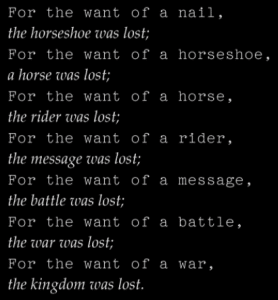 The campaign presents the decision of “who to call to fix your AC” in as nearly a life-and-death light as possible. Presented tongue-in-cheek, course, but still.
The campaign presents the decision of “who to call to fix your AC” in as nearly a life-and-death light as possible. Presented tongue-in-cheek, course, but still.
In the style of the “For want of a nail” prover, Mic presents a rapid-fire stream of consequences for choosing the wrong AC company — one that can’t service you right away.
The consequences move rapidly from spending a sweaty, sleepless night to living in a van down by the river.
Best Case Scenario Radio Spot:
Now, you don’t have to take the drama to the moon like Mic, but you need to make the buying decision to feel as weighty as possible.
And one way add weight to the decision is to move from cost-vs-benefit decision-making towards identity-based decision-making.
Are you a Chevy guy or a Land Rover guy?
If you consider yourself the latter, you darn sure didn’t make that decision based on a bang-for-the-buck basis.
Similarly, one doesn’t spend the extra money to attend Harvard over State U solely based on quality of education considerations.
Whenever you can bond with customers over values and get them to choose you as a matter of identity rather than cost, you win.
Because psychologically speaking, issues of identity are always felt as life and death.
Fictionalize On Theme Only
I generally read this to mean “always stay on-brand with your magical thinking and over-the-top imagery.”
Use your creativity to heighten the subjective, felt-reality presented in your ads, not to strain the credulity of the audience.
“Ooh, Fajitas!” and “Leggo my Eggo” may be phrases never spoken in real life prior to the ad campaigns that inspired them.
But the exaggeration inherent in the phrases embody an already existing felt reality of the audience.
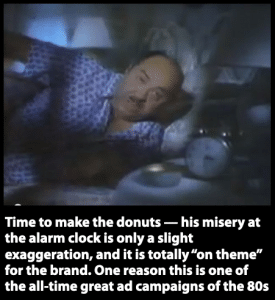
An audience that may well have heard the sizzle and smelt the aromas of Fajita beef only to immediately desire a plate themselves. Or have smelt freshly heated waffles and wanted a plate of ‘em for themselves.
Similarly, “Time to make the donuts” may be an exaggeration, but it effectively communicates the “theme” of “we take pains to make your donuts fresh, including getting up extra early.”
In terms of magical thinking, 1-800-GOT-JUNK?’s magical pointing finger is a bit of magical thinking that communicates the subjective ease that customers feel from full service junk removal.
When you exaggerate off-brand, you run the risk of your imagery inadvertently communicating negative or harmful messages and emotions.
For example, take these ads for FedEx Ground and Hyundai:
Make It Universal
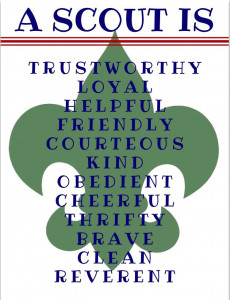 I interpret this rule in two ways:
I interpret this rule in two ways:
First, make sure you convince the audience of some universally desired values. What I might call the Boy Scout virtues.
As in even a vicious criminal wants his gun manufactured by a virtuous man.
Having your audience see you as trustworthy, brave, loyal, friendly and so forth is always a good thing.
Second, when you establish connection through vulnerability, make sure you reveal these things in a way that’s universally accessible.
This is one reason so many good genesis stories feature fathers and father figures; these experiences — whether profoundly positive, negative, or mixed — are universally relatable.
One mistake people often make in striving for connection is to stake their relatability on too narrow of a claim.
For example, they may seek to claim their military service or Christian belief as points of connection.
And they are points of connection. But they are, sadly, relatively narrow points of connection.
In contrast, committing to fight for what you value, displaying loyalty to your comrades, and learning to walk by faith are much more broadly felt points of connection.
So use your specific (and possibly narrow) reality to describe universally felt emotions and life experiences.
Make It Beautiful
In other words, end with hope and connection.
Give your listeners a happy ending at the end of each ad. One where you promise to make their tomorrow brighter than today.
Or at least to make whatever rough patch that’s put them in need of your services turn into smooth sailing after dialing you up.
Let ‘em know you care about ‘em.
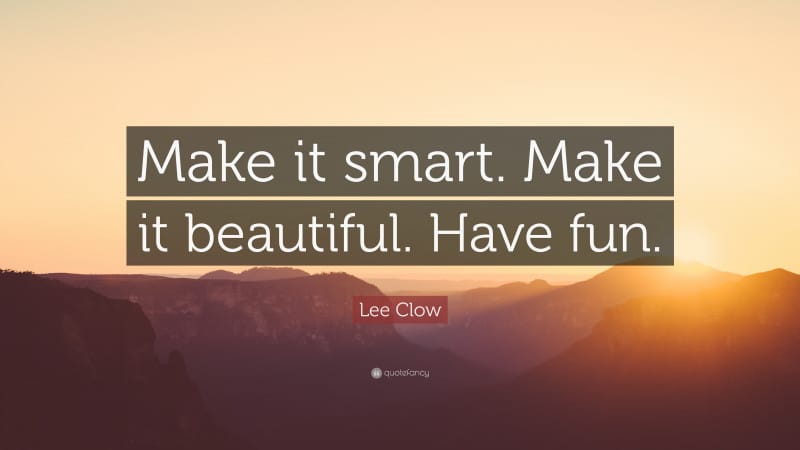
And also, shape your ads and stories so that the overall composition is pleasing.
This is the second part of the formula: a good story, well told.
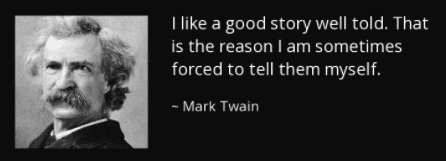
If you follow the other rules in this list, you’ll end up with a good story. Now you just have to ensure you tell it well.
In its simplest terms, beautifying your composition will include coming full circle in your ads, from opening image to ending image.
In more complex terms, it’ll mean using all the tools of story structure and rhetoric to maximum effect.
This is a large part of the craft you’re paying for when you hire a first write ad creative and copywriter.
It’s not only the ability to make the point felt, as well as heard, but to make the whole thing enjoyable to listen to or watch.
Detach Yourself From the Character That Is You
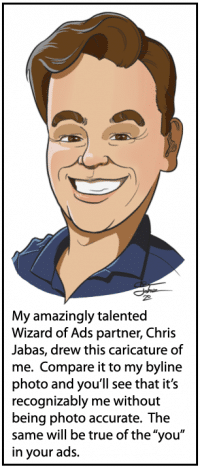 We began this list of Rules seeking to create an ad campaign that would reflect the real you.
We began this list of Rules seeking to create an ad campaign that would reflect the real you.
And the previous six rules will largely achieve that goal.
But while it’ll be the real you, it’ll be 10% of you magnified 10 times.
In much the same way that a caricature of you will look like you without being photo-realistic.
And coming to terms with that requires a bit of detachment.
Moreover, the real you won’t be a $100 bill, meaning not everyone is going to like you.
So your campaign will attract many customers quite powerfully, but it’ll also inspire dislike by usually a small handful of cranks and losers who WILL make themselves heard.
And listening to those cranks is best done with a bit of detachment, especially when they’re attacking your public persona.
Sound Like Something You Want?
Most people who hear about and review these 7 Rules end up thinking two things:
1) That sounds like exactly what I want!
and
2) That sounds far more complicated than I can handle as a DIY project
If that sums up your reactions, then reach out and let’s talk about partnering up to create your amazing, true-to-life ad campaign.
- Are You Paying for Too Much for the Wrong Keywords? - July 15, 2024
- Dominate Your Market Like Rolex — 4 Powerful Branding Lessons - July 3, 2024
- Military-Grade Persuasion for Your Branding - June 25, 2024
